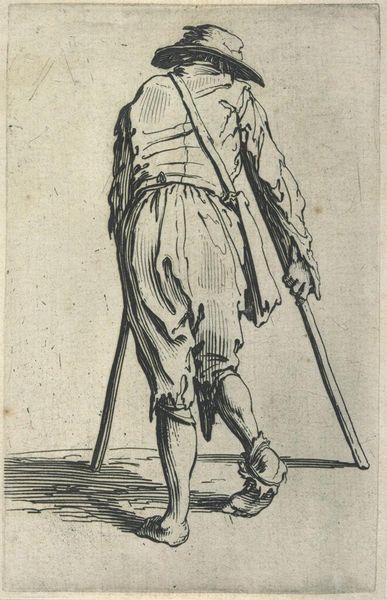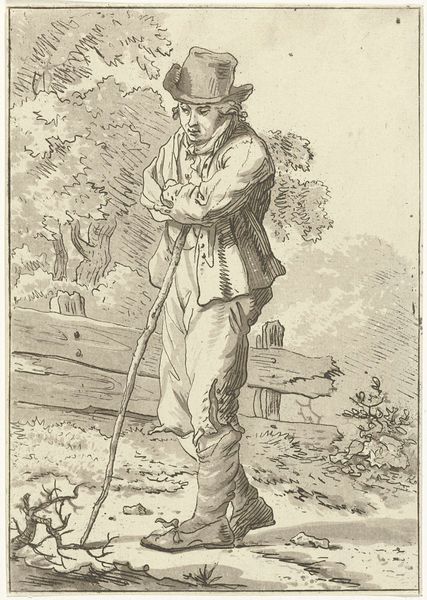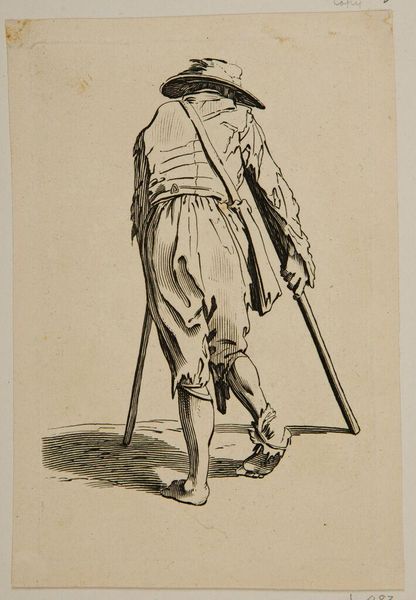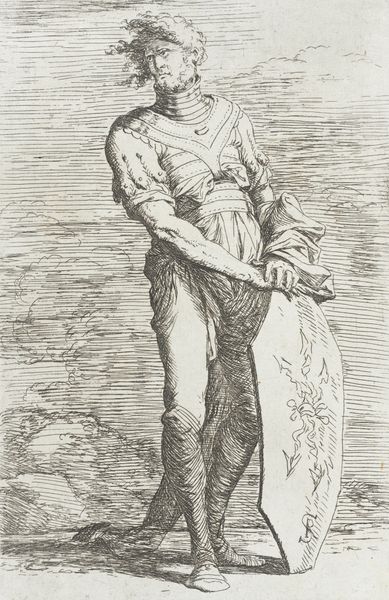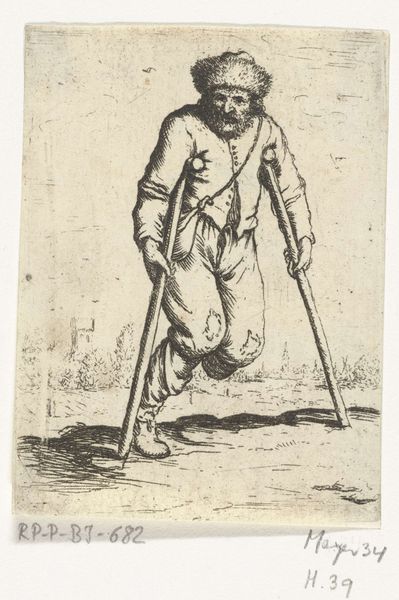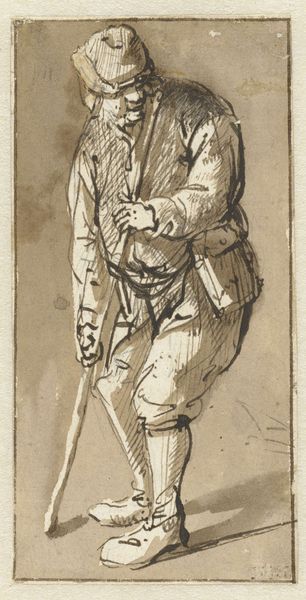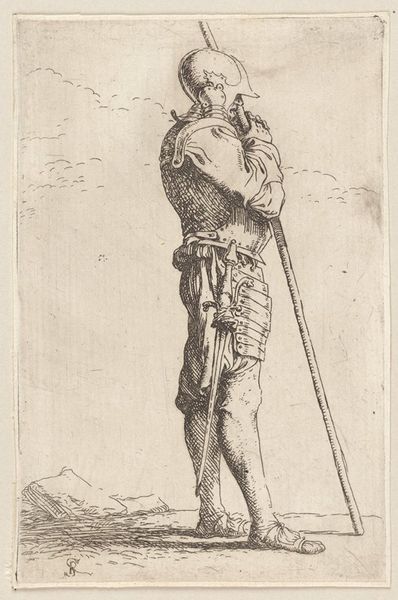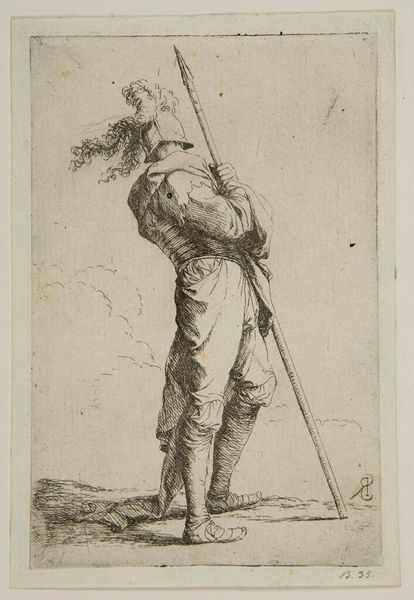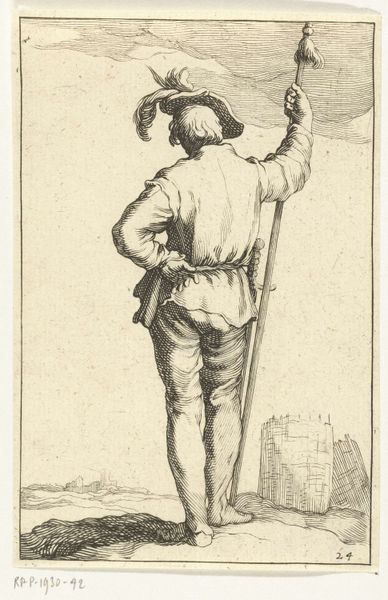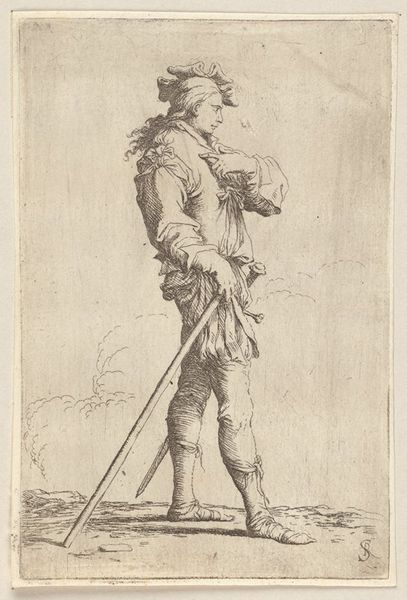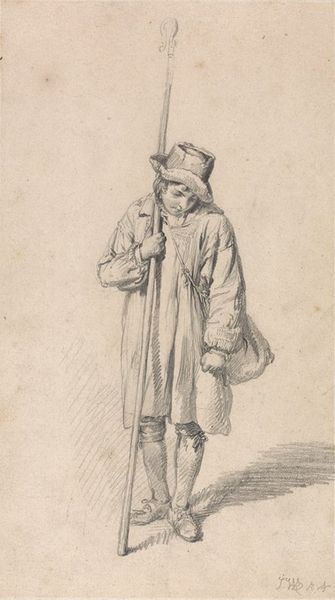
drawing, print, engraving
#
portrait
#
drawing
#
baroque
# print
#
figuration
#
genre-painting
#
engraving
#
realism
Dimensions: height 160 mm, width 100 mm
Copyright: Rijks Museum: Open Domain
Editor: This engraving, titled "De vagebond," or "The Vagabond," was created sometime between 1639 and 1684 by Aert van Waes. It depicts a lone figure in simple garb. The overall tone is somewhat bleak, but there's a touch of character in the man's eyes. How do you interpret the symbolism in this seemingly simple image? Curator: The figure's attire—the feathered cap, worn boots, simple shirt—immediately speak to a particular socio-economic status. But observe, isn't there a sly knowing in his gaze? It's not merely about poverty, but about a life lived outside conventional norms. The stick across his back also echoes this theme of mobility, or the traveler’s burdens. What of the outbuildings? Editor: They seem very basic. Are they symbolic too? Curator: Indeed. Think of genre painting in this era; such background elements would provide crucial clues as to social roles. Note that the artist included a barely suggested, winding stream and vague, hilly horizons—details suggesting natural and even primordial spaces. So, in my reading, he occupies an intersection, being on the border of human settlement but removed from it, existing freely in nature, but perhaps too, exiled from community. Don’t you wonder if that knowing in the subject’s eye represents recognition of those constraints? Editor: I hadn’t thought of it that way. It's interesting to consider how those specific details contribute to such complex themes of marginalization and freedom. Thanks! Curator: A pleasure. It’s the ongoing dialogue between viewer and artwork which enriches cultural memory and gives continued meaning to our shared past.
Comments
No comments
Be the first to comment and join the conversation on the ultimate creative platform.
